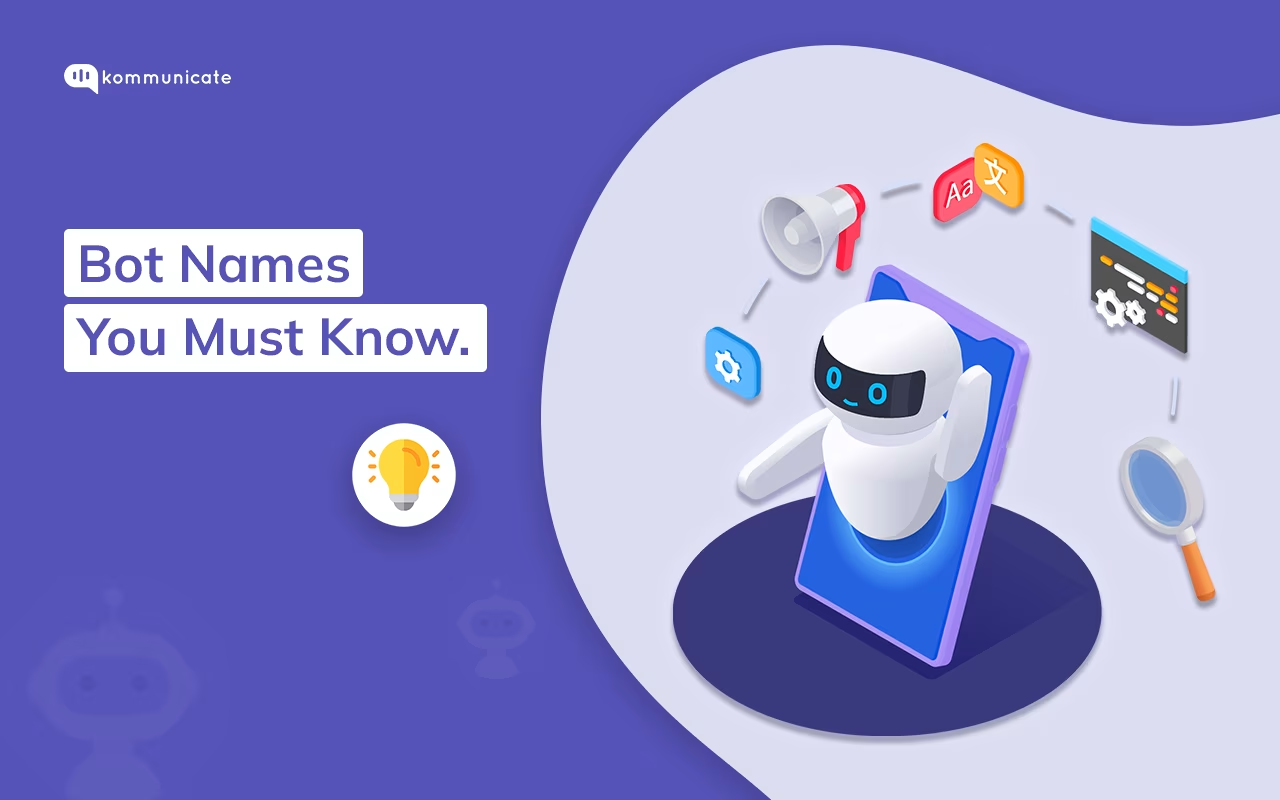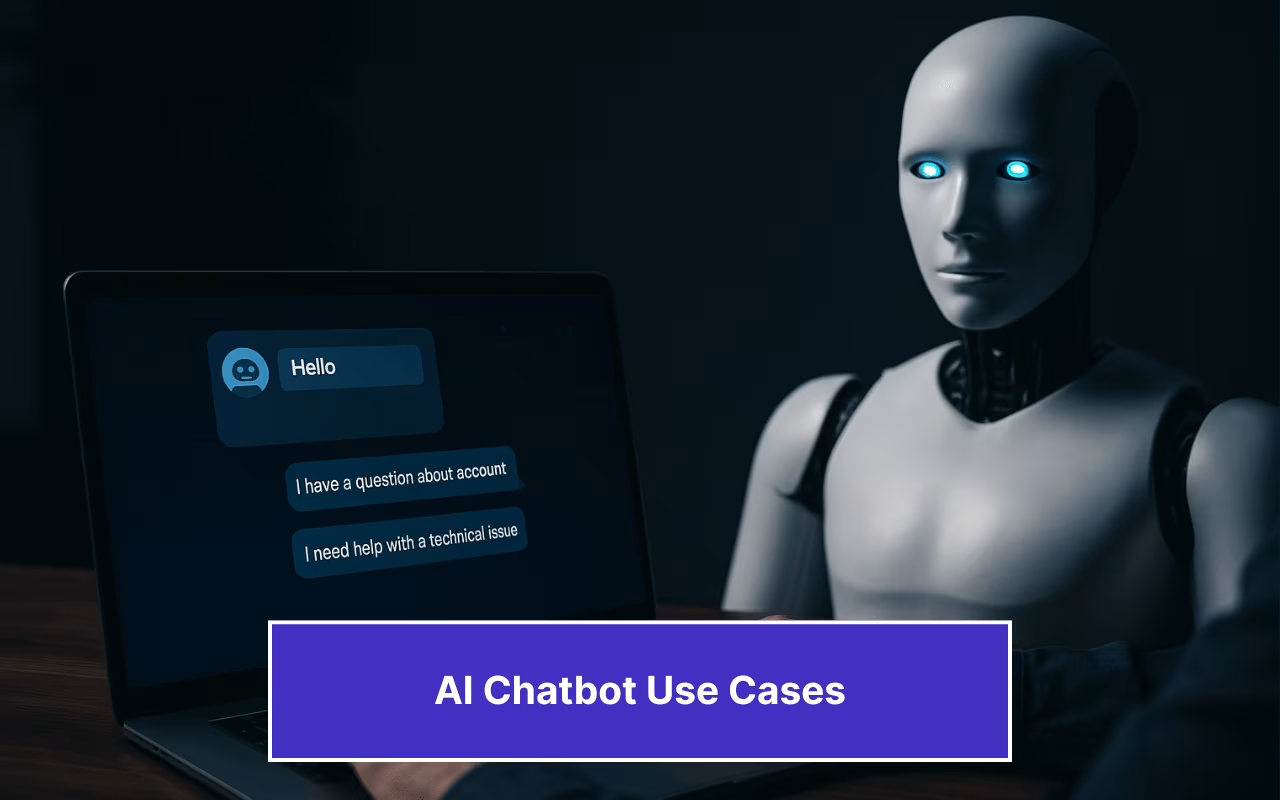Updated on September 22, 2025

AI chatbots and AI agents have become a foundational communication channel for businesses of all kinds. With the explosion of generative AI and LLMs, customers now expect instant, intelligent responses – whether they’re booking a service, troubleshooting a product, or just looking for quick info.
See how you can instantly help your customers with Kommunicate AI Chatbot trained on your website data. Try our no-code FREE demo tool. No Sign-up required.From telehealth and educational apps to banks, telecoms, and gaming platforms, AI chatbots and AI agents are everywhere. Whether it’s on a website, Instagram DM, WhatsApp, or even embedded in a mobile app, chances are high you’ll be greeted by a smart digital assistant.
In fact, AI chatbots and AI agents are now one of the fastest-growing digital engagement channels. According to recent reports, the chatbot market is projected to reach $46.77 billion by 2032, driven by the surge in AI-powered customer support and sales automation.
If you’re reading this, there’s a good chance you’ve already built your chatbot and are now looking for a bot name that suits your business. As you may have noticed, many of them come with distinct names and personalities that help brands feel more human, relatable, or even playful.
If we’ve piqued your interest, give this article a spin and discover why your chatbot needs a name. We will also tell you how you can name your chatbot. Oh, and we’ve also gone ahead and put together a list of some uber cool chatbot/ virtual assistant names just in case.
We’re going to cover:
- What’s in a Name?
- How to Name a Chatbot?
- How Can You Secure Your Bot Name? Risk Checklist
- Best Bot Names
- Conclusion
- FAQs
What’s In A Name?
While a chatbot is, in simple words, a sophisticated computer program, naming it serves a very important purpose.
Giving your bot a name enables your customers to feel more at ease with using it. Technical terms such as customer support assistant, virtual assistant, etc., sound quite mechanical and unrelated. And if your customer is not able to establish an emotional connection, then chances are that he or she will most likely not be as open to chatting through a bot.
Naming your chatbot, especially with a catchy, descriptive name, lends a personality to your chatbot, making it more approachable and personal for your customers. It creates a one-to-one connection between your customer and the chatbot. Choosing a bot name that matches the tone of your business is also key to creating a positive brand impression in your customers’ minds.
There is a reason why Apple has Siri and Google has Alexa instead of Apple bot 2018 or Google bot 2016! Siri and Alexa are not just voice assistants. They connect with us on a personal level and respond to our commands and queries in that relatable, friendly manner that we love!
So then, how do you go about naming your chatbots? Should you give it a common name? A quirky one? A funny one?
Let’s find out!

How to Name A Chatbot?
You can name a chatbot using the following checklist:
- Define the bot’s job and scope.
- Choose persona & tone.
- Pick a naming pattern (human, hybrid, coined).
- Set constraints (length, language, channels).
- Screen risks (trademark, cultural, accessibility).
- Test in-product (greeting/launcher).
- Ship, measure, iterate.
Let’s explore each step of this process to build up your chatbot.
1. Identify the Main Job and Scope for your Chatbot
Different chatbots are designed to serve different purposes.
A healthcare chatbot can have different use-cases such as collecting patient information, setting appointment reminders, assessing symptoms, and more.
Similarly, an e-commerce chatbot can be used to handle customer queries, take purchase orders, and even disseminate product information.
Based on the purpose of your bot, you can choose a name that can depict its purpose.
For instance, Woebot is a healthcare chatbot that is used to communicate with patients, check in on their mental health, and even suggest tools and techniques to help them in their current situation.
It is aptly named Woe-bot. A bot that addresses your woes!
Think about giving these bots bland, technical names, such as, say, mental health bot, therapy bot, etc. Unrelatable and perhaps even slightly off-putting. Right?

2. Choose Persona and Tona
Naming your chatbot can be a fun thing to do. However, naming it without keeping your ICP in mind can be counterproductive.
For instance, as highlighted in our healthcare chatbot guide, a number of healthcare practices use chatbots to disseminate information about key health concerns such as cancers.
Giving a quirky, funny name to such a chatbot does not make sense since the customers who might use such bots are likely not to connect or relate their situation to the name you’ve chosen. In such cases, it makes sense to go for a simple, short, and somber name, ensuring that the chatbot aligns with the gravity of the health concerns being addressed.
On the other hand, when building a chatbot for a beauty platform such as Sephora, your target customers are those who relate to fashion, makeup, beauty, etc. Here, it makes sense to think of a name that closely resembles such aspects.
Choose a persona based on your ICP. If you’re going for a more Gen Z-friendly bot, you can take inspiration from popular music artists or cartoons. For more serious bots around insurance, having a relatable and reliable name can help you.
3. Pick a Naming Pattern
Again, it all comes down to the purpose of your bot. In cases where the function of your chatbot is to largely and primarily engage with customers and provide seamless customer service, it makes sense to choose names that customers are likely to connect with.
In such situations, it makes more sense to choose unique human names so that your customers find the bot to be approachable.
Now, in cases where the chatbot is a part of the business process, not necessarily interacting with customers, you can opt out of giving human names and go with slightly less technical robot names.
Remember, emotions are a key aspect to consider when naming a chatbot. And this is why it is important to clearly define the functionalities of your bot.
4. Set Constraints (Length, Language, Channels)
Your chatbot name should be short enough to remember and follow, and the language and channel that your audience relates to.
For example, a name like Erica (Bank of America’s chatbot) is short, in English, and is available on their website. The same chatbot name will not be as effective for Mexican audiences (where Luis or Maria are more common).
For most screens and chat widgets a name that is shorter than 18 characters makes sense.
The channels where your chatbot will be positioned will also affect the name. On Instagram, which has a younger audience, having names that connect easily with the younger generation makes sense. In similar lines, you’ll probably have to craft a more serious bot name for a channel like Facebook Messenger or WhatsApp.
5. Screen Risk (Trademark, Cultural, Accessibility)
Your chatbot is a product, and it’s important to get trademark protection for the name to avoid lawsuits. Screen your direct competition and see if the names are already being used, and perform a Google and Bing search with [name + chatbot] to see if there are any competitors already in the market.
Similarly, perform a sanity test to see if the name has any negative connotation for your audience. For example, a name in English might translate to a slang word in Hindi or vice versa.
Finally, check for accessibility. See if the chatbot’s name is clear when read by a screen-reader and if it translates well during voice calls. We’re going to give you a simple table to assess risks in the next section.
6. Test in Product
Once you’ve successfully chosen a name, do a small pilot with your customers. You can do this even if you haven’t finished creating the chatbot. Just use a chat widget that greets your customers when they land on the website, and see if they find it to be okay.
Get feedback from your customers, and use focus groups to find the right fit. A good way to approach this is with progressive A/B Tests, which bring out the most preferred name.
7. Ship, Measure, Iterate
Ship out the chatbot with the name you’ve chosen. Look back at the list and re-check for persona and tone. For example, if you’re working on creating a chatbot for a research proposal writing service, you’d want the name to reflect professionalism while still being easy to recall.
Once you’ve shipped the product, keep measuring the engagement with the chatbot name. If more people are interacting with the website, then you’ve succeeded.
At the same time, work with your team to iterate with different names to see if a name change can give you a better engagement rate.
Here is a short video on how to name a chatbot. Watch now to find the ideal name for your chatbot and boost engagement with your users!
Now that we’ve explored chatbot nomenclature a bit, let’s talk about how to assess the risks around your chatbot.
How Can You Secure Your Bot Name? Risk Checklist.
Here’s a short risk checklist that you can run through to check if the bot name you’ve chosen is fully compliant.
| Check | Why it matters | How to test | Pass criteria | Notes/Tools |
|---|---|---|---|---|
| Trademark/DBA | Avoid legal conflict & confusion | Search national TM databases + basic web search | No identical/similar marks in your classes/markets | Local IP office DB + counsel for final call |
| Profanity/abuse lookalikes | Prevent bad optics | Compare against profanity lists; test misspellings | No overlap or easy morph into slurs | Include leetspeak variants |
| Internationalization (i18n) | Avoid awkward meanings | Translate/check slang in top locales | Neutral/positive meanings across locales | Ask native speakers if possible |
| Pronounceability (TTS/voice) | Accessibility & trust | Screen-reader + TTS read-through | Clear, consistent pronunciation | Favor 2–3 syllables, vowel balance |
| Accessibility (screen readers) | Inclusive UX | NVDA/VoiceOver reads name as intended | Correct reading without odd breaks | Avoid unusual character combos |
| Length & truncation | Mobile & widget fit | Render in your UI at common breakpoints | Fits in launcher & header without ellipsis | Target ≤18 chars |
| Visual clarity | Quick recognition | Test mixed case & all-caps | No ambiguity (e.g., l vs I vs 1) | Avoid confusable glyphs |
| Channel handle availability | Consistent identity | Check WhatsApp/IG display, internal handles | Name or close variant available | Consider prefixes/suffixes |
| Search/SEO confusion | Brand clarity | Google/Bing exact-match search | No dominant unrelated entity | Add brand suffix if needed |
| Impersonation risk | Transparency & compliance | Review for “agent/person” misrep | Name doesn’t imply a human employee | Add “virtual assistant” in greeting |
| Cultural sensitivity | Brand safety | Quick cultural review with team/local advisors | No appropriation/stereotypes | Especially for human names |
| Internal adoption | Ops consistency | Check with support/sales/IT teams | Clear to staff; works in scripts | Share microcopy & pronunciation |
Below is a list of some super cool bot names that we have come up with. If you are looking to name your chatbot, this little list may come in quite handy.
Best Chatbot Names
- Hercules, Cratos, The Burn Bot, The Fit Life Bot (For health and fitness businesses)
- Cloud bot, Comet bot, Tornado bot (Meteorological industry)
- Charlotte, Vera, Shirley, Buddy bot, Gigi, Helper bot (For shopping assistants)
- Digital Doctor, Margaret, Florence, Fleming (For healthcare chatbots)
Female Bot Names
| 1. Alice | 12. Luna |
| 2. Kayla | 13. Emily |
| 3. Gabriella | 14. Chloe |
| 4. Emma | 15. Ellie |
| 5. Mia | 16. Zoe |
| 6. Isabella | 17. Lucy |
| 7. Anna | 18. Ivy |
| 8. Aurora | 19. Cora |
| 9. Olivia | 20. Eva |
| 10. Ava | 21. Clara |
| 11. Alia | 22. Iris |
Male Bot Names

| 1. Noah | 12. Chase |
| 2. Bob | 13. Enzo |
| 3. Chris | 14. Ace |
| 4. Ted | 15.Finn |
| 5. Leo | 16. Charlie |
| 6. Luke | 17. Arlo |
| 7. Phil | 18. Eric |
| 8. Tom | 19. Kyle |
| 9. Eli | 20. Liam |
| 10.Ian | 21. Henry |
| 11.Miles | 22. Alex |

Cool bot names
- Wickie
- Homer
- Yanna
- Charlie Bot
- Arch Bot
- Jimmy
- Baby Bot
- Wall-E
- Tag
- Automato
- Magneto
- Venus
- Orient
- Olympus
- Meta
- Chip
- Dale
- Pixel
- Galaxy
- Eyebot
- Trivia Bot
Cute bot names
- Chipbot
- Aida
- Chatterbot
- Wonderbot
- Mario
- Owl Bot
- Zen
- Amazebot
- Avatar
- Macro
- Omon
- Feisty Fueler
- Fishy
- The Joker
- Chuckle Bot
Automate support workflows and resolve queries faster with AI-powered email ticketing from Kommunicate!Catchy bot names
- Alpha Tango
- Fido
- Flasbot
- Zeus
- Angelbot
- Fitbot
- Athena
- Mind Reader
- Amigo
- Elvis
- Dottie
- Agent Smith
- RoboGeorge
- Genie
- Glad Bot
- Thor

AI bot names
- Titan
- Tech Buddy
- Zax
- Augus
- Digital Dave
- Nerdbot
- Alpha
- Celeste
- Jeeves
- Botr
- Alfred
- Mr. Spock
Conclusion
The hardest part of your chatbot journey need not be building your chatbot. Naming your chatbot can be tricky, too, when you are starting out. However, with a little bit of inspiration and a lot of brainstorming, you can come up with interesting bot names in no time at all.
The only thing you need to remember is to keep it short, simple, memorable, and close to the tone and personality of your brand.
If you are still having trouble coming up with unique chatbot names, there are tons of chatbot name and business name generators online. You can easily use these name generators and find a chatbot name that matches the purpose and personality of your bot!
Frequently Asked Questions (FAQs)
Both work—match it to the job and audience. Human names can feel warmer; robot/role names set clearer expectations in regulated/support contexts.
Not inherently. Prioritize neutrality or brand fit. Avoid stereotypes; clarity and tone consistency matter more than gender cues.
Aim for 6–12 characters (≤18 max). Test for mobile truncation and fast pronunciation.
Possibly. Run a trademark/DBA search in your markets and check for obvious brand confusion before adopting.
Rhythm (two syllables), alliteration (“HelpHub”), clear meaning, or a distinctive coined form that’s still pronounceable.
Yes. Add a short line in the greeting (“I’m an AI assistant”)—it builds trust and sets handoff expectations.
Run a quick slang/translation scan for your target languages, then do a native-speaker check for pronunciation and unintended meanings.
Chat launcher tooltip/title, first message, email notifications, WhatsApp/IG sender name, help-center widgets, and internal dashboards.
At Kommunicate, we are envisioning a world-beating customer support solution to empower the new era of customer support. We would love to have you onboard to have a first-hand experience of Kommunicate. You can signup here and start delighting your customers right away.





